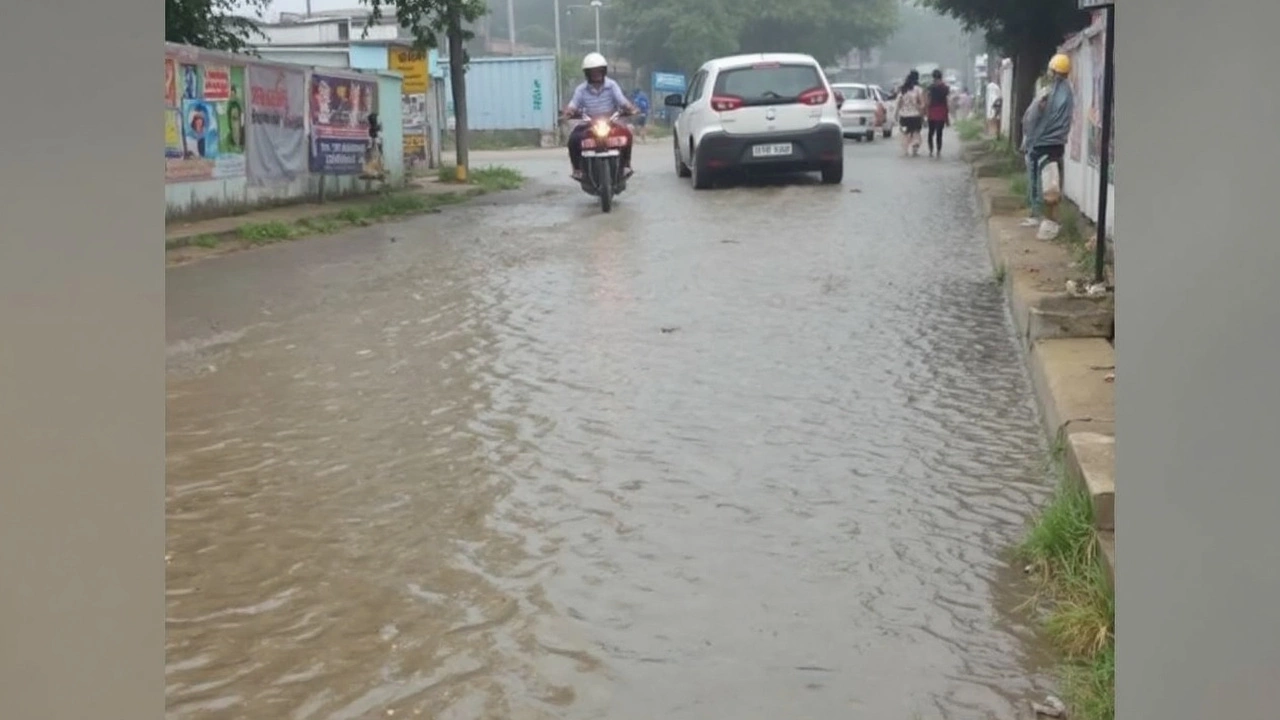Humidity Explained: How It Affects Your Daily Life and Weather in India
Ever wonder why a 30°C day in Delhi feels like a sauna? The hidden culprit is humidity. It’s the amount of water vapor hanging in the air, and it can turn a warm day into a sweltering one in just minutes. When humidity is high, your sweat doesn’t evaporate quickly, so your body can’t cool down effectively. That’s why you feel sticky, tired, and sometimes a little cranky.
Humidity isn’t just a feeling – it’s a measurable factor that meteorologists track with numbers like “relative humidity” and “dew point.” In India, the monsoon season pushes humidity levels above 80% in places like Kolkata and Delhi, making rain alerts feel even more intense. The Indian Meteorological Department (IMD) often mentions humidity when issuing orange or red alerts because it amplifies the risk of heat‑related illnesses and slippery roads.
Why Humidity Makes the Heat Feel Worse
The heat index, sometimes called the “feels‑like” temperature, is a combo of actual temperature and humidity. If the air is 32°C with 70% humidity, the heat index can jump to around 40°C. That’s why the same temperature can feel completely different in a dry desert versus a humid coastal city.
High humidity also affects your daily routine. Traffic jams become slower as engines overheat, and outdoor activities get postponed because the air feels oppressive. Even indoor spaces can feel clammy if there’s no proper ventilation, which is why many homes in Delhi turn on ceiling fans and dehumidifiers during the monsoon months.
Practical Tips to Beat High Humidity
First, stay hydrated. Drinking water every few hours helps your body sweat and cool down. Add a pinch of salt or a squeeze of lemon if you’re sweating a lot – it replaces lost electrolytes.
Second, dress in light, breathable fabrics like cotton or linen. Dark colors absorb more heat, so stick to light shades that reflect sunlight. If you have to be outdoors, wear a wide‑brimmed hat and sunglasses to protect yourself from the sun’s glare.
Third, plan your errands. Look at the IMD’s rain and humidity forecasts and schedule outdoor tasks for early mornings or late evenings when the heat index drops. Many of the recent weather alerts for Delhi‑NCR and Uttar Pradesh show that humidity peaks in the afternoon, so a quick trip before 10 am can save you from the worst of it.
Fourth, improve indoor airflow. Open windows early in the day to let the cooler air in, then close them at night if the humidity spikes. Using a fan in combination with a dehumidifier can lower indoor humidity by up to 20%, making the air feel fresher.
Finally, protect your electronics. High humidity can cause condensation inside phones, laptops, and other gadgets. Keep them in dry places, use silica gel packs in bags, and avoid exposing them to sudden temperature changes.
Understanding humidity helps you make smarter choices, whether you’re heading to work, planning a weekend trip, or just trying to stay comfortable at home. Keep an eye on the local weather reports, stay cool, and you’ll beat the muggy days without breaking a sweat.
Noida Weather Forecast: Showers and Cloudy Skies Expected 5–9 July 2025
Noida's weather for 5–9 July 2025 looks unsettled with showers, fluctuating temperatures from 26°C to 35°C, and sticky humidity. Cloudy skies are set to dominate, rain might pop up, and UV levels will stay high, making sun protection essential. Prepare for the typical monsoon mood outdoors.





